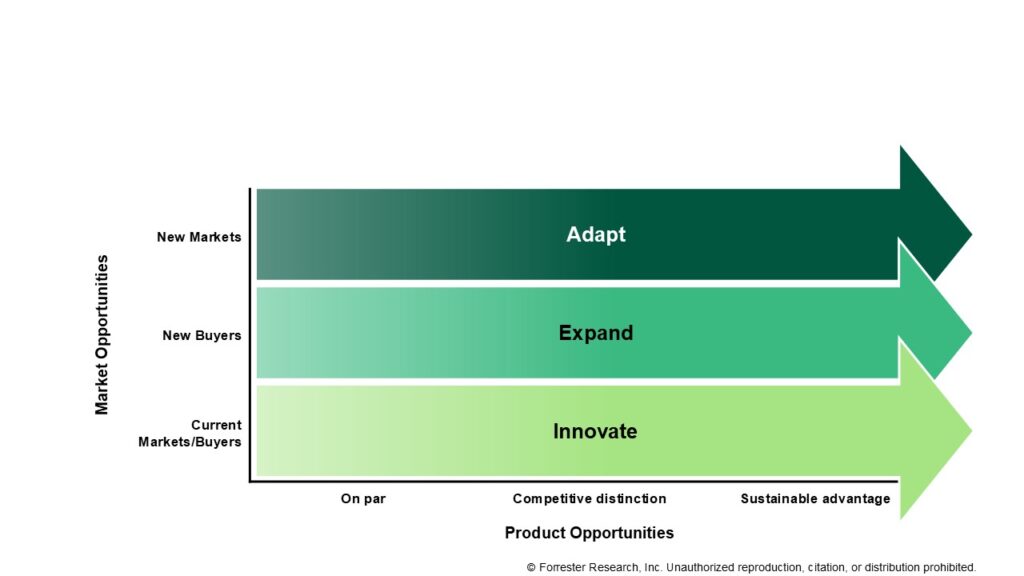Align Product Management And Portfolio Marketing To Create Three Growth Trajectories
Barriers to growth seem to be continuously on the rise for B2B companies. Higher-than-ever customer expectations, rapidly advancing technologies that are harder and harder to keep up with, and a seemingly constant influx of new competitors all make markets more crowded and more challenging than ever.
Portfolio Marketers And Product Managers Should Align To Ignite Growth
Portfolio marketers and product managers both want to ensure the success of their offerings and grow revenue. But the two functions often operate separately, focused on their own efforts to drive growth. Portfolio marketers are often focused on go-to-market strategies for the existing book of business, while product managers are working on how to add more capabilities to existing products. These two functions, however, can work together to provide a unified approach to growth that identifies the most attractive market opportunities while determining the best product strategies to capitalize on them.
Portfolio Marketers Should Be In Search Of New Audiences
Portfolio marketers should always be assessing the best growth opportunities by looking at existing and new buyers and markets:
- Existing buyers and markets. Opportunities exist to increase retention rates and usage, extend the offering to more users, or upsell buyers with better features or premium capabilities.
- New buyers. Opportunities to expand to new targets, such as new buying centers, new buying groups, and/or new buyer personas, exist to increase cross-sell and penetration within accounts.
- New markets. Evaluating new markets to target could include new industries, geographic regions, companies of different sizes, and even different market categories to play in.
Product Managers Should Look For Innovation And Expansion Opportunities
Product managers are always looking for opportunities to improve their products and need to determine how best to invest in offerings to create competitive advantage and leadership:
- On par. Offerings need to be continually improved with new features, better performance, improved user experience, and seamless integrations as well as ongoing regulatory and security compliance to keep up with market demands and competitive moves.
- Competitive distinction. To create an advantage and drive faster growth, offerings can create a new and better way of solving an existing problem, making it better, easier, or more economical for customers.
- Sustainable advantage. To achieve a sustainable advantage, oftentimes a new innovation that solves new, unmet, or emerging needs allows an organization to have a first-mover advantage in a changing or newly developing category.
Marrying these two spectrums of market and product opportunities creates a matrix where it becomes easier to see how different strategies — innovate, expand, and adapt — might be used to create competitive distinction and sustainable advantage for each type of market opportunity.

To find out more about the innovate, expand, and adapt strategies, join me and my colleague, Lisa Singer, at B2B Summit North America in Phoenix, March 31–April 3, 2025. Or if you’re a client and would like to book a discussion with an analyst, please reach out to Beth Caplow or Lisa Singer.
